As a longarm quilter I get to see many quilts and always feel fortunate that the people that piece these quilts trust me enough to allow me to quilt for them. Longarm quilters get to see and handle all types of quilts – some beautifully prepared and pieced and sometimes they need a little bit of coaxing and that is where the skills we learn come into play. A lot of time, effort and money is spent on equipment, tools and education and I, personally, have shed many tears of frustration during what has been the biggest learning curve of my life. There have also been tears of joy and beautiful friendships made within the industry and also with my customers.
Having said all that I’d like to share a quilt from one of my favourite customers who has also become a good friend. The quilt was given to me to quilt well over 2 years ago and it was only finished about 5 weeks ago…..thanks for your patience Judy! If I’d attempted to quilt this when it was given to me I’d never had managed it – it would have looked like a “dogs breakfast”! That’s where education and experience are invaluable.
This quilt had a large amount of fullness in the centre due to the insertion of the Mariners Compass….
As soon as I hung the quilt top over the front of the machine I could see I was going to have issues. Following are the steps I took to combat (yes, it was a little like going to war![]() ) this fullness,
) this fullness,
- Laid the quilt top on a flat surface to get an idea of just how much fullness there was
- Cut 2 layers of Hobbs Wool Batting a little larger that the centre circle of the Mariner’s Compass
- Used Roxanne’s glue to stick the 2 layers together
- Sprayed basting spray on the back of the quilt top, then stuck the 2 layers of batting on the back of the quilt top to cover the Mariner’s Compass
- Loaded the quilt top, very carefully, basted the top and sides and proceeded to quilt. The quilt had 2 layers of Hobbs under the Mariner’s Compass as well as the Minijumbuk that was being used on the whole of the quilt.
- I pin basted the quilt as I was quilting, taking particular care throughout the centre of the quilt.
- Once the majority of the quilting was completed I then worked very slowly and precisely on the centre piece
And here is the finished product,
So, what could have been a total disaster turned into a beautiful “trapuntoed” heirloom for their new boat.
I hope you enjoyed this mini tutorial and if you ever find yourself in a similar situation it may be of some help.
And finishing on a personal note….here’s another photo, complete with a story of Scarlett. We were about to have a spa and she asked if I could take her hair out of her ponytail as she wanted to be a mermaid. She was in the spa and I during my very inelegant attempt to join her asked if she could please move her legs so that I could get in. She told me in no uncertain terms…..”they’re not legs Nanny, that’s my tail”!!
Until next time,
Hugs,
Sharon

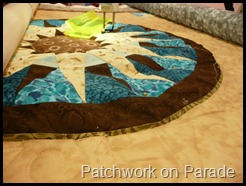
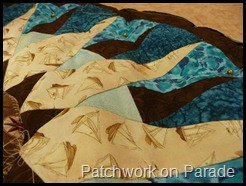
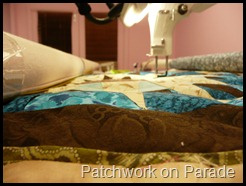
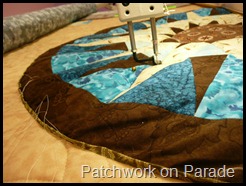


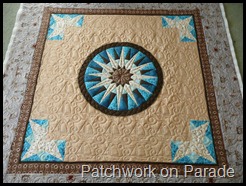
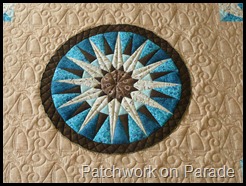

So if I read that right you added extra layers of batting in the compass to give the top more padding to cover... I think it looks amazing! Great idea and I'm sure it will be treasured thanks to your skills.
ReplyDelete